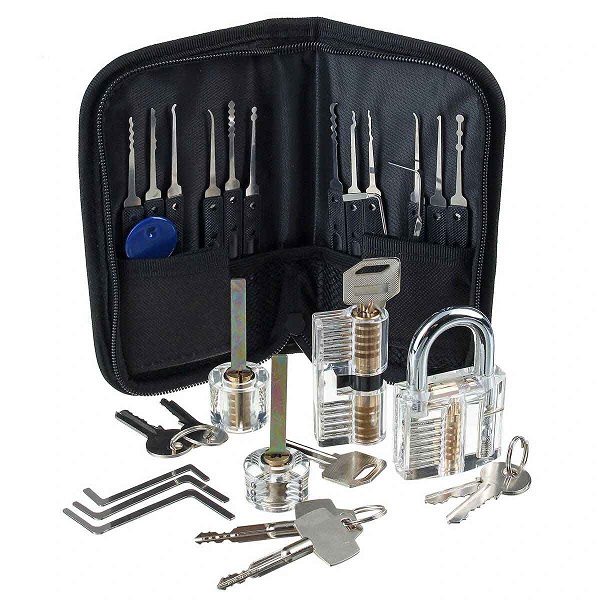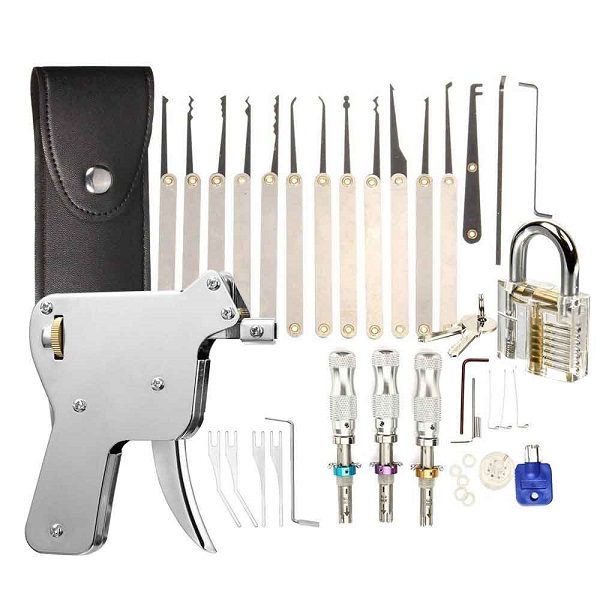Professional Lock Pick Set Guide: How to Improve Your Lock Picking Skills
2025-09-29 08:58
Lock picking is a skill that blends precision, patience, and a deep understanding of mechanical mechanics. Whether pursued as a hobby, for locksmith training, or for security research, the journey begins with the right equipment. Acquiring a reliable toolkit is the first critical step, and for any serious enthusiast, the decision to Buy Professional Lock Pick Set is paramount. A high quality set provides the necessary foundation upon which all skills are built, ensuring that the tools are an aid to learning, not a hindrance.
What are the Essential Tools in a Professional Lock Pick Set?
A professional set is more than just a random assortment of picks; it is a curated collection designed to tackle a variety of lock mechanisms.
1.Hook Picks: The Precision Instrument
The hook pick is a key tool in any lock pick set. Its curved tip is made for lifting pins one at a time in single-pin picking (SPP). This gives precise control and helps understand how locks work. Mastering the hook pick is essential for opening difficult locks and improving lock picking skills.
2.Rake Picks: The Tool for Speed
Unlike the precise hook, rake picks are made for speed. Tools like snake or city rakes have wavy edges that are quickly moved across pins. The goal is to set many pins at once using vibration, not one by one. Raking is faster than SPP and useful for quickly opening standard locks, especially in emergencies.
3.Tension Wrenches: The Unsung Hero
Beginners often overlook the tension wrench, which is as important as the pick. It applies rotational pressure to the lock. Too little tension and pins won’t bind, too much and they lock up. Wrenches come in different shapes to fit keyways. Learning tension control is a key skill that gives important feedback.

What are the Fundamental Lock Picking Techniques Every Beginner Should Master?
Understanding the tools is only half the battle; applying them correctly through proven techniques is key to success.
1.Mastering Tension Control
Lock picking starts with precise tension control. Apply light rotational force to create a binding pin. Keep steady, gentle pressure while working the pins. Beginners often use too much force, which locks the mechanism. Practice helps you feel and hear when a pin sets correctly.
2.The Single-Pin Picking (SPP) Method
Single pin picking is a basic and educational technique. Using a hook pick, you find and lift each binding pin to the shear line. Gently rake the pick to locate the pin with the most resistance, push it until it clicks, then move to the next pin. This method teaches patience, skill, and understanding of how the lock works while giving clear feedback on progress.

How Can You Systematically Practice to Advance from Novice to Skilled Locksmith?
3.The Raking Technique
Raking is a quick method of lock picking. Insert the rake pick fully into the keyway and apply light tension. Move the rake in and out or rock it up and down to set the pins. Success depends on finding the right rhythm and adjusting tension. It is a good way for beginners to open locks fast and build confidence before trying single pin picking.

How Can You Systematically Practice to Advance from Novice to Skilled Locksmith?
Progress in lock picking is not accidental; it is the result of deliberate and structured practice.
1.Progressive Lock Training
The most effective way to improve is to practice on a set of progressive locks. Start with a simple 3 or 4-pin lock with standard pins. Only after you can consistently open it with both raking and SPP should you progress to a 5-pin lock. The next step is to introduce locks with security pins, starting with one spool pin, then two, and so on. This structured approach ensures that you build confidence and skill incrementally without becoming frustrated by locks that are too advanced.
2.Focused Drills and Repetition
Instead of randomly picking locks, engage in focused drills. Dedicate one session solely to practicing tension control with different wrenches. In another session, use only a hook pick to master SPP on a lock you know well. Repetition is key to building muscle memory. The goal is to make the fundamental movements so familiar that they become second nature, freeing your mind to focus on the subtle feedback from the lock.
3.Understanding Lock Mechanics
A skilled lock picker knows why a technique works. Study how pin-tumbler locks function using clear practice locks and theory. Learning about the shear line, binding order, and security pins such as spools and serrations will improve your skills. Knowing what a false set feels like helps you adjust your technique instead of guessing.
Becoming good at lock picking requires the right tools, proper technique, and regular practice. High-quality equipment helps, but skill does not depend only on price. Consistent practice with an affordable set can deliver excellent results. For those on a budget, it is entirely possible to find a Cheap Professional Lock Pick Set that contains the essential tools needed to build a strong foundation and advance your skills effectively. The true investment is not just in the tools, but in the time and patience you dedicate to mastering the craft.

 Like Us on Facebook to enjoy 5% discount
Like Us on Facebook to enjoy 5% discount